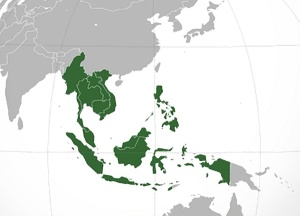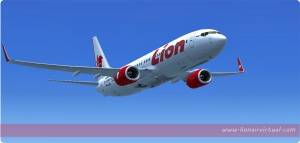Is ASEAN Open Skies a myth?
April 11, 2014 2 Comments
LESS than a year to its full implementation, the ASEAN Open Skies remains an uncertainty. First mooted some 20 years ago, it has been a long time coming. While there was some open discussion in its early days, all seems somewhat quiet of late. Is it likely to be postponed? Or is it after all a myth?
The issue really hinges on how ready the ten-nation association are collectively. Even deeper than that, how prepared are they to overcome the hurdles, real or perceived, that stand in the way of full implementation. Unlike the European Union, ASEAN is by definition an “association” and not a common government with binding law enforcement obligations. The bloc is made up of a disparate string of nations that are vastly different in their stages of economic development. How they weigh the opportunities that such a common policy could bring against possible losses at home would determine their readiness for participation. Some nations may still prefer the seeming protection of local businesses accorded by bilateral exchanges. This was already tacit when at the outset, the various nations agreed on “the importance of the development of Competitive Air Services Policy which may be a gradual step towards an Open Sky Policy in ASEAN.”
Yet the good news is that against the uncertainty, the skies are already becoming more liberal as a number of airlines have stepped up expansion plans across the region. The battle for dominance has begun.
ASEAN nations
So it is with the less developed nations of Myanmar, Laos, Kampuchea and Vietnam even as they seek more foreign investments and ways to boost their exports. Accessibility to the landlocked outback of these nations could open up opportunities for growth, as noted at a meeting of ASEAN transport ministers in 1996 that the association aimed “to promote interconnectivity and interoperability of national networks and access thereto taking particular account of the need to link islands, land locked, and peripheral regions with the national and global economies.” The question really is how ready they are to embrace this objective to see to its implementation.
At the other end of the spectrum is Singapore, which is the smallest of the nations but the most advanced economically and most ready to go full hog with the implementation of the ASEAN Open Skies policy. After all, Singapore has been a pioneer in advocating liberal skies on the global stage. A concern among its ASEAN neighbours may be that of how they perceive Singapore carriers as benefitting from an enlarged Asean hinterland. It works both ways. Foreign carriers, particularly short-haul operators with limited capacity and resources, will benefit from Changi Airport’s hub connections to tap into other markets in the region. Besides its strategic geographical position, Changi offers excellent infrastructure and has appeal aplenty for transits,
Middle-of-the-road Malaysia and Thailand seem less passionate about the push. Brunei Darussalam, which has the smallest population, appears quite comfortable the way it is for now. However, the Philippines with a similar geography as Indonesia could benefit from more liberal connections.
Which airlines will rule the ASEAN skies?
The region’s growth is likely to be led by budget carriers. With the focus on Indonesia, its home-based carriers are not sitting by idly. Flag carrier Garuda Indonesia is acquiring smaller 100-seat planes more suited to the shorter runways of secondary airports, which will be largely served by its budget subsidiary Citilink. Asked how Garuda was gearing up for the ASEAN Open Skies, Garuda president and chief executive Emirsyah Satar said: “The ASEAN Open Skies Agreement will open up the Indonesian market to carriers from other ASEAN member countries, but our position is very strong in Indonesia and we are prepared for the competition. Our network’s aggressive international expansion and continual developments and service improvements will also prepare us for competing in a more liberal environment.” (Interview: Emirysah Satar, president & chief executive, Garuda Indonesia, 4 September 2013) He projected that Citilink would carry 19 million passengers by 2015 and there were plans to add international routes to several destinations in Southeast Asia. Garuda is also developing a new hub in Bintan, which is a hop away from Changi Airport.
Compatriot Lion Air, which is Indonesia’s second largest airline, is also expanding its fleet and gearing up its regional subsidiary Wings Air to service smaller airports. Lion Air has long expressed its intention to hub through Changi although it has also announced plans to develop Batam as an alternative transit hub to the congested Soekarno-Hatta Airport in Jakarta for both domestic and international flights. Lion Air president Rusdi Kirana said: “The distance is actually shorter if you transit in Batam rather than flying south to Jakarta to transit. The shorter flying time makes flying more convenient for passengers and it means aircraft burn less fuel, leading to significant cost savings.” From Batam, which, like Bintan, is a stone’s throw away from Changi, Lion Air hopes to fly to destinations such as Guangzhou, Hong Kong, Bangkok, Jeddah, New Delhi and Mumbai.
It is to be seen how the plans of Garuda and Lion Air to develop Bintan and Batam respectively will impact on Changi, which is likely to see higher growth as Singapore becomes an attractive destination in itself and as a desirable feed port for international and regional traffic. In introducing a direct non-stop service from Jakarta to London in May this year, Mr Satar has hoped that Indonesian travellers would fly Garuda instead of routing their travel out of another airport such as Changi.
Other smaller carriers are expected to go for a bigger slice of the growing pie and new carriers launched to serve secondary airports.
Not to be left out of the race, AirAsia and Tigerair made early moves to establish their presence in the huge Indonesian market. Until a full open skies policy is in place, joint ventures are the expedient way to gaining a foothold. Indonesia AirAsia, which is 49% owned by AirAsia, operates beyond Indonesia to Singapore, Kuala Lumpur, Phuket and Ho Chi Minh City. AirAsia chief Tony Fernandes’ ambition is to dot the region with the AirAsia brand. The Malaysian budget carrier has also set up joint ventures in Thailand and the Philippines. This means AirAsia, which is headquartered in Kuala Lumpur, and its joint-venture airlines are serving destinations in all the ten Asean countries, as summed up by Mr Fernandes: “Think we are done in Asean.” But liberalization offers more than just opportunities within Asean; AirAsia is well positioned to connect its passengers beyond to destinations in Australia, Japan, Korea, China, India and the Middle East.Responding to AirAsia’s thrust into Indonesia, Lion Air teamed up with Malaysia’s National Aerospace and Defence Industries to launch Malindo Airways for services from Kuala Lumpur across Asean and to China, India and Japan, a move that Mr Fernandes had rebuffed as no match for AirAsia’s strong brand and positioning as Asia’s largest budget carrier. So far Lion Air appears to be one with the biggest plans, which include an airline leasing company to be situated in Singapore, a new full-service airline Batik Air which was launched in May last year and which plans to fly to Singapore as its first international destination sometime this year, and a premium charter under the Space Jet brand.
Not so lucky is Tigerair, whose partnership with Mandala Airlines Indonesia is teetering on the brink, as was its partnership with SEAir in Tigerair Philippines which has since been sold to Cebu Pacific Air. Its attempt to spread its wings across the region had met with a string of failures added to a blemished record of poor service. Its ambiguous relationship with sibling airlines within the Singapore Airlines (SIA) stable has not improved its fortune; today Tigerair and Scoot are competitors on some routes. Scoot, which is 100% owned by SIA, looks likely to overtake Tigerair in the game. It has partnered Nok Air to operate a domestic service in Thailand. Nok has hoped that this will be its vehicle for expansion overseas. Regional carrier SilkAir continues to fly in the shadow of parent SIA, which may have to continue to shore up the fortunes of its offshoots with feeder traffic from and into its long haul services.
Jetstar Asia, the only other airline based in Singapore that is not part of the SIA group, has proven to be a tough competitor. Parent Qantas has been actively promoting the Jetstar brand across Asia, having also set up joint ventures in Japan, Vietnam and Hong Kong.
Whether the Asean Open Skies is finally formalized or not, regional carriers have already started to prepare for the eventuality. The question as to whether it is a myth is no longer relevant. Clearly, the end-date is not as important as the progression towards it.




